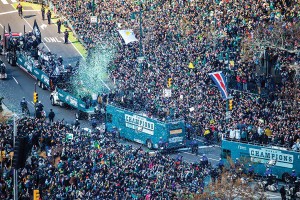The Last Roll of Kodachrome
I read last month that the last roll of Kodachrome film that Kodak produced was processed in Kansas for photographer Steve McCurry. Kodak chose McCurry to shoot the last roll. It was a 36-exposure roll, and the photographer took two months to use it up. For you “youngins” out there, Kodachrome is the old type of film that we old folk used to capture photographs. The stuff you fed into the back of the camera with great care not to expose the film or to waste any exposures. Snap the back closed and ready to go.
I was wistfully nostalgic at the news. That rectangular yellow box represented a completely different approach to processing memories than we have today. Before digital cameras, a box of Kodak film always signaled an occasion, an event, an artistic endeavor. It meant there was something momentous in your future: a vacation, a new baby, a spectacular sight upcoming.
Picture-taking was done with great care and preparation. It was expensive. You had to purchase the film and pay to have all of it processed, bad pictures with the good ones. There were no do-overs. It was time-consuming but suspenseful. After you plopped that canister into the envelope at the local pharmacy (if you don’t remember Kodak film, you probably don’t remember the local pharmacy either), you waited days, sometimes weeks, hoping that you captured the perfect shot of your new niece, or the sun setting at the beach, or the attractions and highlights of your well-earned annual vacation.[SIGNUP]
Picture-taking was complicated. Cameras had to be adjusted — focus, light exposure, shutter speed, flash or no flash. For those of us who are not technically inclined, the introduction of the automatic camera was a beautiful thing; you might not get the right shot but at least the wrong shot was in focus and properly lit.
I remember standing at the counter weighing the cost of the film and processing against the likelihood that I would actually take 36 pictures of my sixth-grade class trip to the zoo. If I didn’t use up all the film I would be faced with the agonizing decision to leave the film in the camera and patiently wait for the next event to use it up or, more likely, succumb to the irresistible need to see the photos of zebras and my girlfriends posing in front of the giant gorillas. The second choice was wasteful, and so great care was taken to buy the right number of exposures in the first place.
Ridiculous, right? Now you can click away, delete the undesirables, insert the memory card into your home printer, and the zoo is in your hands — all in the same day. I seem to get stuck, however, at the computer stage of the process. All those digital images, hundreds of them, are permanently in cyber-purgatory safely stored within the memory of my PC. I can almost hear them crying “Let me out!” But there are just so many, the task seems daunting. Instead, I go searching for a particular shot when I’d like to see it or send it off to someone else.
I suppose that’s the upside to digital photography. No clutter of photo albums taking up shelf space. No sifting through all the “bad” shots and lamenting the quality of the keepers. No more hours of pasting and inserting and labeling because, despite what you think, you will not remember what beach you were standing on and for what occasion and why you’re wearing that silly hat and, who is that kid on the left anyway? Really, who is that kid?


